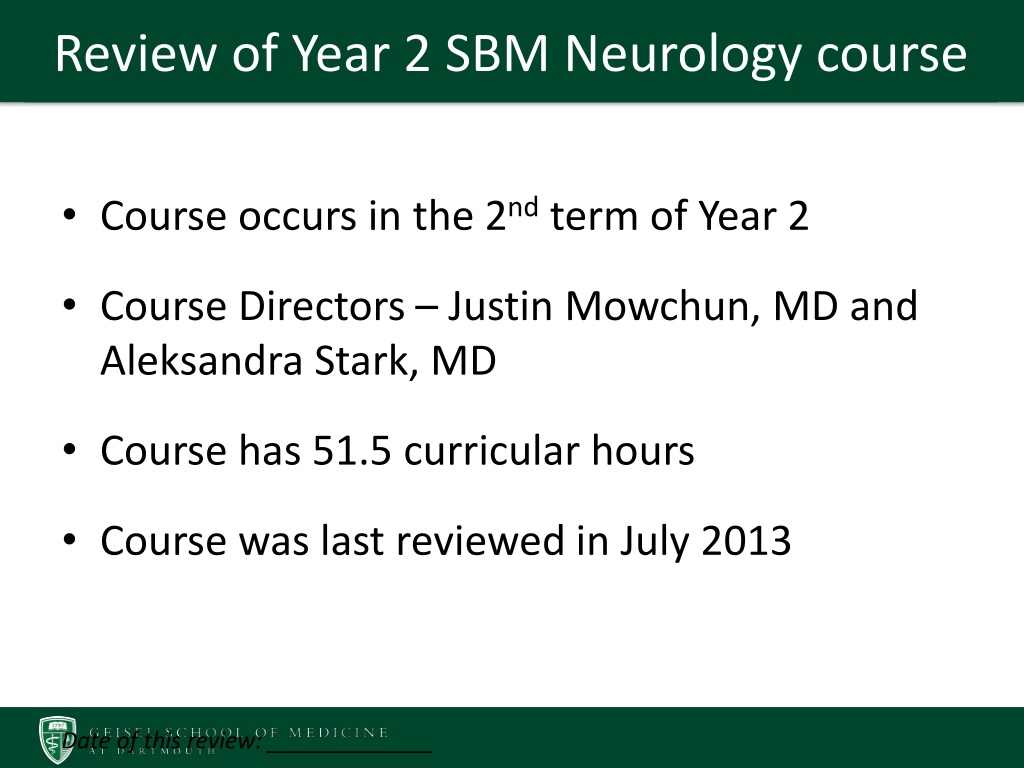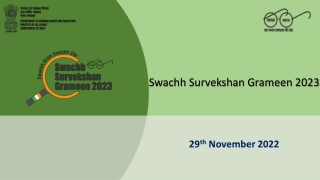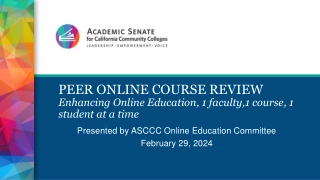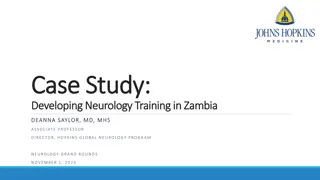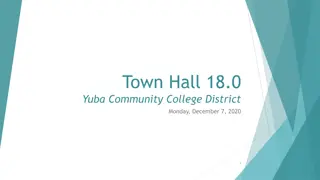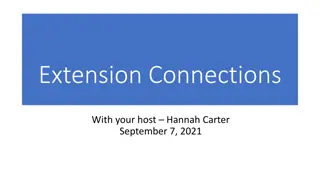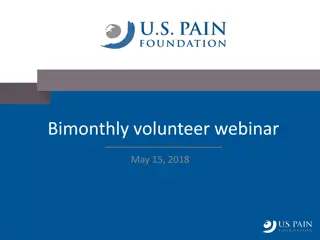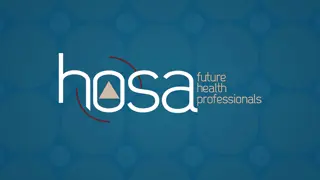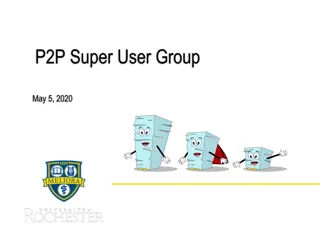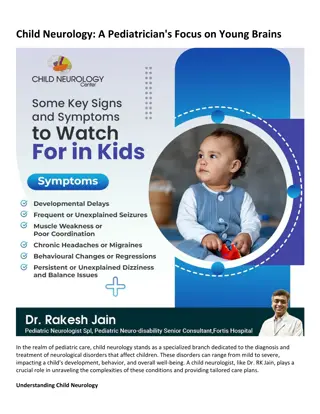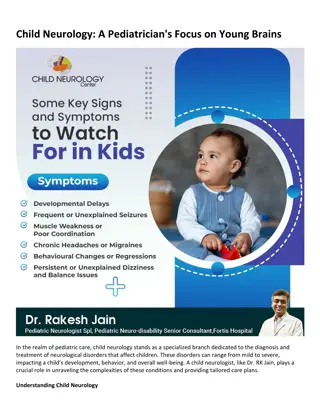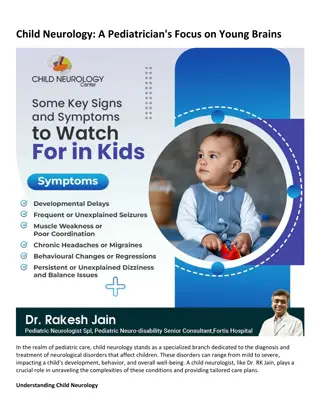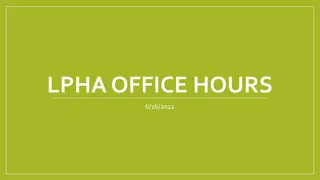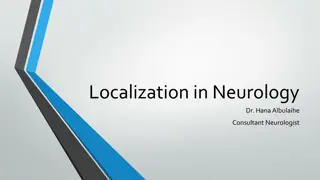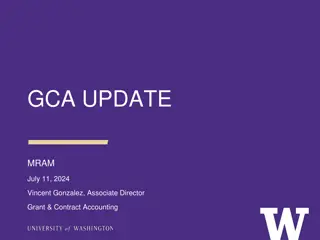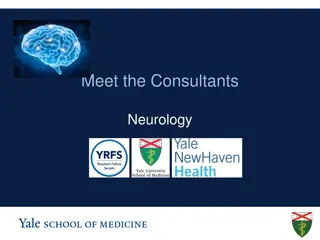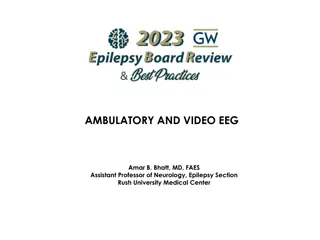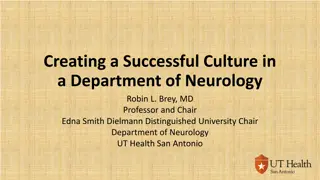Review of Year 2 SBM Neurology Course Updates
Review of the Year 2 SBM Neurology course, which occurs in the 2nd term of Year 2, includes course directors, hours, review dates, action plans from prior reviews regarding classroom models, exams, faculty continuity, oral presentations, and lab exercises. Modifications made to enhance teaching methods and evaluation strategies for improved student learning experiences.
Download Presentation

Please find below an Image/Link to download the presentation.
The content on the website is provided AS IS for your information and personal use only. It may not be sold, licensed, or shared on other websites without obtaining consent from the author.If you encounter any issues during the download, it is possible that the publisher has removed the file from their server.
You are allowed to download the files provided on this website for personal or commercial use, subject to the condition that they are used lawfully. All files are the property of their respective owners.
The content on the website is provided AS IS for your information and personal use only. It may not be sold, licensed, or shared on other websites without obtaining consent from the author.
E N D
Presentation Transcript
Review of Year 2 SBM Neurology course Course occurs in the 2ndterm of Year 2 Course Directors Justin Mowchun, MD and Aleksandra Stark, MD Course has 51.5 curricular hours Course was last reviewed in July 2013 Date of this review: _____________
Action Plan from Prior Review Issue: The "flipped classroom" model and "jigsaw sessions" were not well understood or received by the class. Action: The rising second year class is very familiar with these models of education and we believe that they will be better understood and utilized by this class. We believe that it will be appropriate to continue these pedagogies in the move to decrease reliance on conventional lectures. Completed
Action Plan from Prior Review Issue: The exam was felt to be less clear and congruent with the course objectives and content. Action: Completely reviewing the exam. Including more short essay-type exams that can more easily be linked to course objectives. Exam has been revised, although does not currently include short essay style questions
Action Plan from Prior Review Issue: Lack of continuity of faculty in small group sessions. Action: We will be making every effort to have a consistent group of small group preceptors so that they will be able to evaluate students on non- cognitive domains of communication and professionalism. This will allow us to evaluate these domains directly within the context of the rest of the course, decreasing reliance on the linked PBL sessions to evaluate these course objectives. Completed
Action Plan from Prior Review Issue: Oral presentations were not well received (mostly due to irregularities in duration and "value" of the presentations and that they were not included in the exam). Action: One short team-based paper on a relevant and important topic selected from a list, with the product being graded and also posted on the course web site for review by the rest of the class and inclusion on the course exam. Topics might include something like: "A young patient has a stroke and on workup is found to have a patent foramen ovale. She asks how this should be treated and specifically whether this should be closed. No longer relevant (replaced by CBL sessions)
Action Plan from Prior Review Issue: The lab exercises were thought to be less valuable and more "busywork". Action: Eliminate these sessions and return to an experience based on direct patient exposures that had been well-received in the past. Completed (Neuro Bedside Learning)
Course Objectives 1. Define terms common to the discussion of patients with disorders of the nervous system and review basic principles. Correlate neurologic symptoms and signs with locations of damage to the nervous system. Explain the approach to evaluation of certain common neurologic symptoms such as headache, vertigo, dizziness, depressed level of consciousness, seizures, hearing loss and cognitive decline. List and explain the symptoms of common neurologic disorders and syndromes such as neoplasms, trauma, infectious diseases, multiple sclerosis, extrapyramidal disease (especially Parkinson) Discuss the role, utility and significance of diagnostic testing in patients with neurologic symptoms and disorders. Explain the basis for pharmacological and non-pharmacological interventions in the management of common neurologic diseases. Describe the pathophysiology, major pathologic features as well as the epidemiology of various neuropathological processes including neoplasms, cerebrovascular disease, trauma, neurodegenerative disorders, infections of the nervous system, neuromuscular diseases, mitochondrial inherited disorders and diseases of myelin. Compare the pediatric neurologic examination to the adult exam and to list the important neurodevelopmental milestones in early childhood. Explain how the expression of pediatric neurologic disease may differ from adult. Explain the levels of evidence in determining effective care and the limitations of each. 2. 3. 4. 5. 6. 7. 8. 9. 10.
Course Objectives 11. 12. Utilize the results of outcome studies to evaluate the effectiveness of patient care. Describe how operations and processes that occur within a complex healthcare system have an impact on cost and quality of effective and timely stroke care and care for neuromuscular and neurodegenerative disease. Practice and demonstrate systematic problem-solving skills with regard to patients with neurologic disease. Explain the ethical and legal issues involved in brain death and the minimally conscious state and genetic counseling and treatment of incurable conditions. Communicate with fellow students and faculty about patients with neurologic disease. Demonstrate team skills by participating effectively in team exercises. Take responsibility for his- or her-own medical education. Search efficiently for and obtain recent, high quality, relevant medical information and scientific literature to solve problems. Read critically, evaluate, and assess medical information and scientific literature about important neurological topics and questions. Practice clinical reasoning skills in the context of a patient with stroke. Demonstrate skills necessary for assisting patients to understand treatment options and the need for care. To help colleagues by contributing constructive suggestions during peer review 13. 14. 15. 16. 17. 18. 19. 20. 21. 22.
Mapping of Course Objectives to Geisel Competencies Course directors to review mapping of course objectives to new Geisel competencies and will communicate any changes to Brian Reid
Course Objectives Comments Course objectives capture content of course well and are sufficiently detailed Objectives include a broad range of medical knowledge and other skills
Format of Course & Session Objectives Course objectives are provided in the syllabus Course objectives are written in the correct format Session objectives are provided in the course materials Session objectives are written in the correct format
Issues of Redundancy Are there major issues of redundancy with other courses? Students indicated that the pathophysiology of atherosclerosis was covered in several other courses and would have preferred more focus on localization of stroke in the stroke session Faculty have worked to coordinate overlapping information in the area of traumatic brain injury; this appears to have been successful PBL case on dementia is shared between Neuro and Psych
Health and Values Goals Ethics Identify key concepts in health care ethics and demonstrate an ability to recognize ethical issues arising in patient care and population health and to think critically and systematically in applying an ethical analysis Cultural Awareness Demonstrate an understanding and skill in managing patient care of people of diverse cultures, social, economic standing and belief systems Health Equity Identify the root causes and approaches for addressing health disparities locally and globally Resilience Demonstrate knowledge of skills and practices to prevent and address stress and maintain resilience in caring for patients and oneself Compassion and Empathy Demonstrate abilities to understand each patient s experience of illness, adapt scientifically appropriate care to conform to that patient s needs, and communicate in terms that each patient can understand There also are synergies to health law, communication skills, professionalism (as LCME requires).
Health and Values Content What Health and Values Program material (healthcare ethics, cultural awareness, health equity, resilience, compassionate care) is presented in the course? Ethical issues surrounding brain death covered in Stupor and Coma session Ethics also covered in sessions on Huntingon s Disease and genetic testing Epilepsy case involves cultural awareness discussion Are the Health and Values topics noted in the course and session objectives? Yes What do the student evaluations indicate regarding Health and Values teaching? Students felt course was respectful to all, but suggested increased focus on patient presentations, compassionate care, and cultural awareness Course makes good use of video examples in all CBLs except Coma; course directors will consider if appropriate video can be included in Stupor and Coma CBL
Summary regarding Objectives Objectives were appropriate to course Some students raised concern that course material did not always match material in First Aid Some material is important to clinical care yet not emphasized in First Aid (e.g. coma) Some material covered in Neuro chapter in First Aid is covered in other courses at Geisel Course directors will investigate coverage of glaucoma and some other special senses -related topics in year 1 Course directors plan to highlight high yield step 1 material in some sessions
Course Learning Opportunities Lecture 18.5 hrs. (36%) Large group quiz/CBL review sessions 7 hours (14%) Conferences 16 hrs. (31%) PBL 6 hrs. (12%) Bedside learning 4 hours (8%)
Summary regarding Pedagogy Course used a variety of pedagogical methods with a focus on small group case-based learning Students expressed diverse opinions about this format, with some appreciating the active learning techniques used, and others feeling that the material was too complex to be self-taught
Assessment Students must pass both a final exam and the engagement portion of the course Engagement portion: Students must score at least 21 of 24 possible points 0-2 points for attendance and participation in each small group session 1 point for completing and passing each readiness quiz
Assessment for Course Objectives All objectives can be assessed through a combination of final exam, CBL, and Neuro Bedside Learning sessions Some students did not reach engagement points threshold due to late completion of quizzes and late arrivals to small group
Summary regarding Assessment Students would appreciate being notified if they are at risk not to earn sufficient engagement points due to lateness or lack of participation Grading policy appears to be clear, but enforcement can be variable, leading to concerns about fairness Students would like small group leaders to discuss issues around lateness or participation with them as they arise Will investigate if SBM office can update point totals in real time during the course, so students know how many points they have earned as course progresses
Measures of Quality Step I 2014* 2015* 2016* Means 14-16 SYSTEMS-BASED TOPICS Behavioral sciences 0.15 -0.1 -0.43 -0.13 Behavioral Health and Nervous system 0.06 -0.10 -0.18 -0.07 Biostatistics, Epidemiology, Pop Health 0.01 0.22 N/A 0.12 (14-15) Cardiovascular system 0.02 0.16 -0.1 0.03 Endocrine system 0.39 0.24 0.09 0.24 Gastrointestinal system 0.54 0.2 0.06 0.27 Hematopoietic/lymph systems 0.09 0.10 -0.15 0.01 Immune system 0.16 -0.07 -0.02 0.02 Musculoskeletal, skin, CT systems -0.02 0.22 0.15 0.12 Nutrition 0.22 -0.08 -0.15 -0.003 Renal/urinary system 0.23 0.02 -0.27 -0.007 Reproductive system 0.39 -0.03 -0.04 0.11 Respiratory system 0.18 0.27 -0.22 0.08 *values reported for core disciplines are SD above the US/Can mean for Geisel mean scores
Measures of Quality AAMC GQ Measures of Quality Course Evaluation Overall Quality AY 14- 15 Overall Quality AY 15- 16 Year 2 courses 4.27 3.69 Cardiology 3.62 3.23 CT & Bone 4.11 3.89 Dermatology 4.09 3.88 Endocrine 4.19 3.85 FEK 4.47 4.31 GI 4.44 4.26 Hematology 4.40 4.02 Infectious diseases 4.15 3.74 2016-2017 Overall Quality 3.40 Introduction to Pharmacology 3.54 3.35 Introduction to SBM Themes 3.46 3.06 Nervous system 3.58 3.60 On Doctoring 4.20 4.16 Psychiatry 3.29 3.05 Reproduction 4.38 4.08 Respiration scale [1=poor; 2=fair; 3=good; 4=very good; 5=excellent]
Measures of Quality Course Evaluation scale [1=poor; 2=fair; 3=good; 4=very good; 5=excellent] SBM SBM Neurology AY 14-15 (96%)* AY 15-16 (96%)* AY 16-17 (92%)* Overall quality of course 3.46 3.06 3.40 Clarity of learning objectives 3.51 3.31 3.52 Organization of the course 3.28 2.98 3.15 How well the course introduced me to this discipline 3.83 3.37 3.63 Congruence of assessment questions to material emphasized in course 3.63 2.88 3.50 *student participation rate on course evaluation
Measures of Quality Student Comments Strengths: CBLs: Students found these sessions to be a good way to learn material and work through individual cases Though it could sometimes be difficult to master the details in the amount of material covered, our small group session emphasized key points well, and provided a good introduction to the field of Neurology I liked the CBL learning format and felt this was a better way to learn neurology than large lectures CBL answer keys were very helpful Review sessions: These were a good way to sum up key points from CBL and eliminate any small group discrepancies I really liked the Friday Reviews. I felt like they greatly helped consolidate material and tie up any loose ends. Dr. Swenson s finals review was very helpful but please give it 2 hours!
Measures of Quality Student Comments Strengths: Bedside Neuro: Students found this to be an interactive way to combine Neurology and On Doc skills Bedside neuro was very helpful in having us practice exam skills and do real-time thinking about differential diagnoses and localizing lesions I learned a lot and definitely felt more confident about performing the neuro exam afterwards. I also don't think we needed 3 bedside learning session, 2 would have been enough. Self-teaching/Course Structure: Varied responses, but some preferred not having a lecture-predominant course The iBook, study buddy questions, readiness quizzes, bed side learning and small group sessions were much more immersive than simply being talked at in lecture. I wish that all of medical school was this interactive. CBL was GREAT! it was so useful to basically have the chance to look at the material over and over in a given week with the combination of a readiness quiz, CBL, then case review on Fridays. it helped the material really stick.
Measures of Quality Student Comments Suggestions for Improvement: Organization: Though students mostly enjoyed CBL, there was some incongruence between lectures and small groups If you're going to have a CBL-based course, then make it all CBL. The lectures seemed to fit awkwardly into the flow of the term, particularly when you needed some of that lecture content in order to answer the case questions. I thought that some of the small group sessions really would have benefited from a lecture before hand. They were some of the most complex topics and it was not readily learnable in the self-taught approach of CBL This should not be a course that is self taught. It was very difficult to understand the topics, and there was no logical progression of the course. I don't understand why our first lecture was on anti-epileptic drugs, when we hadn't even learned about epilepsy yet. If you leave the format the way it is, please make sure students are aware at the very beginning that they are expected to teach themselves all of the CBL material - it felt like we were indirectly told we needed to learn it all instead of directly told so.
Measures of Quality Student Comments Suggestions for Improvement: Final Exam:Overall, this was found to be very year-one heavy and did not focus as much on clinical cases There was a LOT of year 1 material on the final that was rapidly covered in a one hour lecture at the beginning of the course by Dr. Swenson. This should have been emphasized and reviewed more throughout the course, especially on tracts and localizing lesions. The stroke lecture was a great place to incorporate learning about localization, but there was hardly any mention of this. Many of the questions could have been answered after year one neuroscience. What I thought were the important, interesting and relevant parts of the course were not tested. Prep materials: I spent 6 hours every weekend trying to reorganize and understand the preparatory materials that we were given. A new iBook needs to be made for neurology that is matches the current pdfs. There was an abundance of material, without any clear guidance on what we should use. For example, some CBLs had pre-recorded lectures, others had powerpoints and others recommended the iBook. If you are going to have a self-taught class, it should be extremely well organized, with one iBook that goes in a logical order.
Measures of Quality Student Comments Suggestions for Improvement: Pathology Lectures: These were found to be too long and beyond the scope of the course We almost never covered all the material and spent too much time and detail trying to cover every single thing, instead of emphasizing the important conditions. And there were slides with just pictures and no notes making it difficult to review. We had an atrocious lecture on brain neoplasms. Clearly Dr. Nguygen (who is a good lecturer) was not told what to cover, and covered over 20 types of cancers. There needs to be better communication. Overlap between Neuro SBM and First Aid: Students are worried that the course did not prepare them well for board questions on neurology The objectives for this class hardly correspond to what is covered in First Aid and Step 1. It worries me GREATLY that the poor quality of the SBM neurology course will reflect in my neurology Step score. We spent 4 hours learning about coma (not covered at all in First Aid) and would have instead learned about topics like glaucoma and various eye pathologies, and Friedrich Ataxia. I think the actual lectures could be more engaging and reflective of what we need to learn for boards. For instance, we didn't learn any of the congenital neurological deficits which is 5 pages in first aid.
Summary regarding Measures of Quality Students have diverse opinions regarding CBL format of course; most feel either neutral or positive once they become accustomed to the preparation required Students would appreciate more guidance at the beginning of the course about which materials to use to prepare for cases Students request more focus on localization in formal course sessions, since some do not feel confident about neuroanatomy Course directors plan to add some high yield step 1 tips to various course sessions Course directors will investigate where certain special senses topics are covered in the curriculum (e.g. glaucoma) Course directors have addressed Neuro-oncology pathology session that was not well-received this year (session covered too much information)
Recommendations Provide transparency regarding engagement scores Request that faculty discuss directly with a student when there are concerns about repeated lateness or lack of participation Investigate if SBM office can maintain real-time tracking of points so students know how many points they have earned as course progresses Provide additional guidance regarding course structure at the beginning of the course to prepare students for CBL-style learning Some students find wealth of resources to be overwhelming: course directors plan to provide a primer for the two CBL sessions that currently use a longer iBook to clarify core content Consider pre-course readiness quiz to review year 1 neuroanatomy in preparation for learning about localization
Possible Considerations for Future Discussed in course review, but not intended as formal recommendations Consider adding time to Dr. Swenson s final review session (90 minutes vs 60 minutes), since students enjoyed this session and requested it to be longer Investigate whether objective 11 Utilize the results of outcome studies to evaluate the effectiveness of patient care is being (or could be) addressed in Patients and Populations to free up time in this course for additional focus on Neuro topics Consider adding video examples of brain death cases to be used in Stupor and Coma small group
Action Plan CBL sessions: Request that faculty discuss directly with a student when there are concerns about repeated lateness or lack of participation Continue to provide scaffolding to students in the orientation session and initial review sessions about the CBL process and associated preparation materials (ibook textbook: Disorders of the Nervous system by Reeves and Swenson will be an optional reference text only) Continue to discuss that every CBL case involves localization and continue to re-emphasize localization in the weekly review sessions (also add some more localization discussion/problems in the assessment of neuro exam findings lecture and stroke lecture)
Action Plan Reduce Neuro oncology pathology lecture to 1 hour and course directors to work with Dr. Nguyen to streamline that content Attempt to increase final review session to 90 minutes will ask MEC to consider removing course objective 11 and associated 1 hour evidence- based medicine lecture in order to have more time for neurology instruction Course directors plan to integrate some high yield step 1 tips to various CBL review sessions A couple of student asked about covering glaucoma in neurology SBM and we will discuss with year 1 anatomy/histology/neuroscience team to consider some integration
